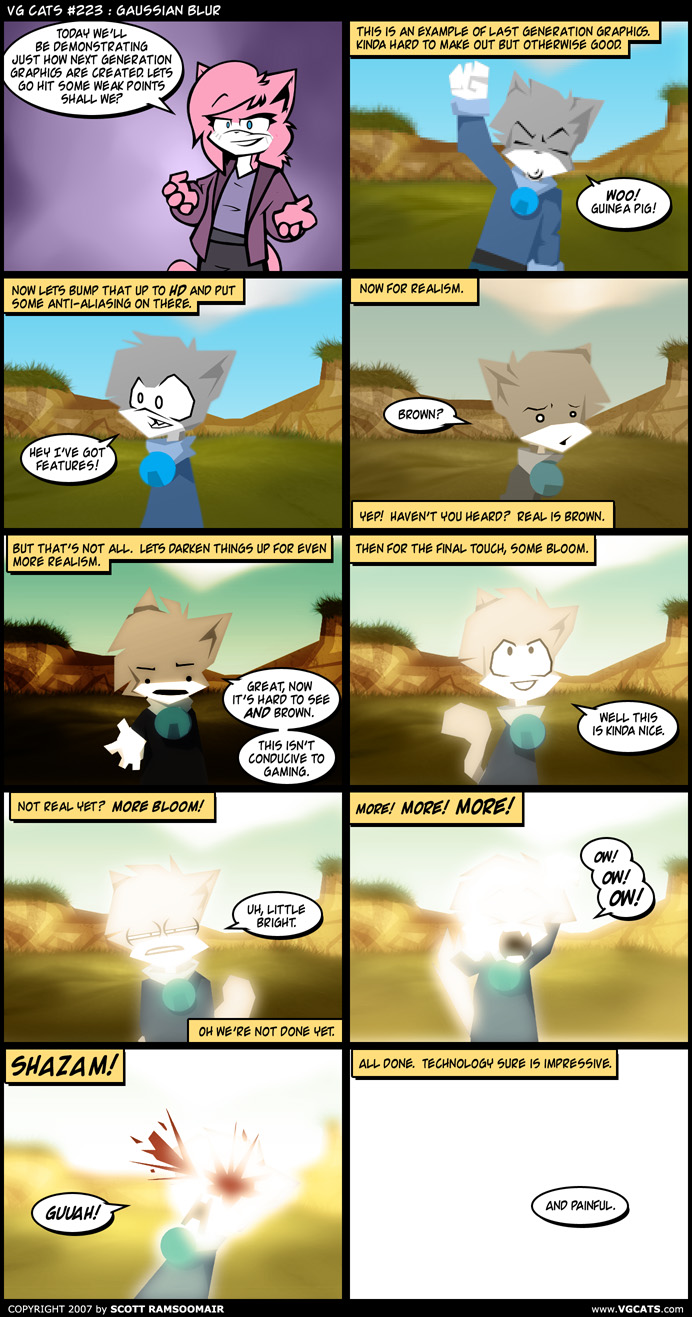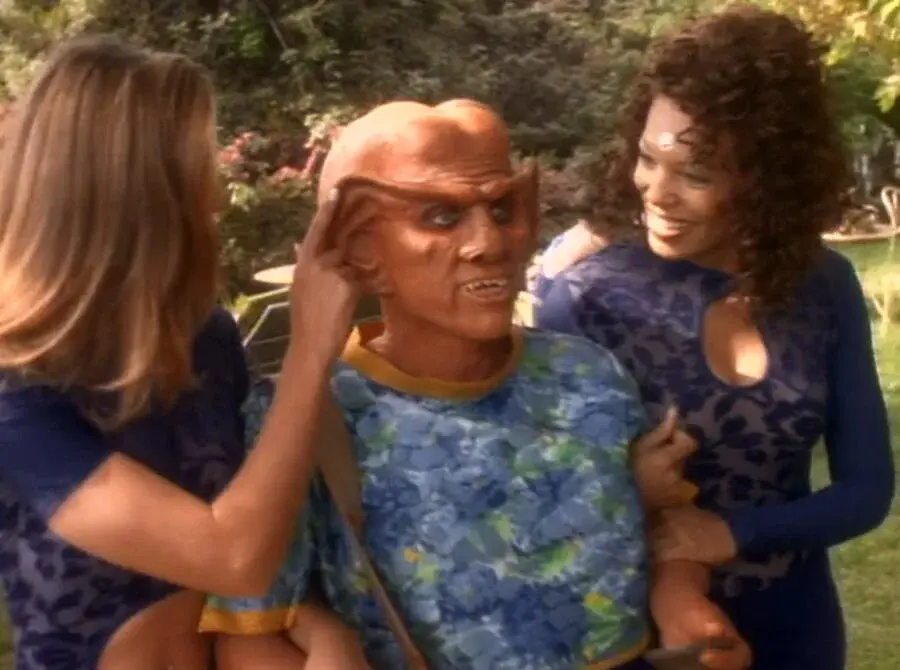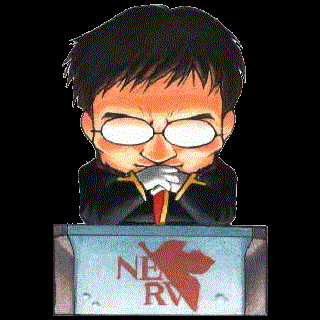Step 1. Turn on ray tracing
Step 2. Check some forum or protondb and discover that the ray tracing/DX12 is garbage and gets like 10 frames
Step 3. Switch back to DX11, disable ray tracing
Step 4. Play the game
True, I’ve had very few games worth the fps hit
I don’t even check anymore lol.
If I know a game I’m about to play runs on Unreal Engine, I’m passing a -dx11 flag immediately. It removes a lot of useless Unreal features like Nanite
Nanite doesn’t affect any of the post processing stuff nor the smeary look. I don’t like that games rely on it but modern ue5 games author their assets for nanite. All it affects is model quality and lods.
Lumen and other real time GI stuff is what forces them to use temporal anti aliasing and other blurring effects, that’s where the slop is.
what’s wrong with nanite?
Nanite + Lumen run like garbage on anything other than super high end hardware.
It is also very difficult to tweak and optimize.
Nanite isn’t as unperformant as Lumen, but its basically just a time saver for game devs, and its very easy for a less skilled game dev to think they are using it correctly… and actually not be.
But, Nanite + Lumen have also become basically the default for AAA games down to shitty asset flips… because they’re easier to use from a dev standpoint.
Then you get to enjoy they worst LODs known to man because they were only made as a fallback
The slideshow Control experience does look stellar for a bit
Control and Doom Eternal are the only exceptions to this rule I’ve played, but they are very much the exception.
Best use of ray tracing I’ve seen is to make old games look good, like Quake II or Portal or Minecraft. Newer games are “I see the reflection in the puddle just under the car when I put them side by side” and I just can’t bring myself to care.
And film grain. Get that fake static out of here
Most “film grain” is just additive noise akin to digital camera noise. I’ve modded a bunch of games for HDR (RenoDX creator) and I strip it from almost every game because it’s unbearable. I have a custom film grain that mimic real film and at low levels it’s imperceptible and acts as a dithering tool to improve gradients (remove banding). For some games that emulate a film look sometimes the (proper) film grain lends to the the look.
Agreed. It fits very well in very specific places, but when not there, it’s just noise
I’d add Denuvo to that list. Easily a 10-20% impact.
Unfortunately that’s not a setting most of us can just disable.
/c/[email protected] sure you can
Shadows: Off
Polygons: Low
Idle Animation: Off
Draw distance: Low
Billboards instead of models for scenery items: OnDoes your PC even have a dedicated GPU? At this point you might as well give up on PC gaming and buy a console.
674fps
Alt: F4
Launch: BalatroI think my PC can run the C64 demake of Balatro in an emulator
PS3-> everything is sepia filtered and bloomed until nearly unplayable.
I will say that a well executed motion blur is just a chef’s kiss type deal, but it’s hard to get right and easy to fuck up

Man, VGCats. Deep, deep, deep cut
I think of that comic every time I see a gritty brown game. I don’t see bloom as much any more, though.
I think maybe that’s part of why The Last Of Us grabbed everyone so hard; it was a gritty, green game. STALKER 2 is brown AF, though. Thank God they skipped the whole bloom fad.
I think bloom is one of those things that when it’s used right it brings the atmosphere together without sticking out as a thing that’s going on, like how our eyes adjust to light changes. When it’s out of control and blacks out the scene by going WAAAAY too bright it sucks because you’re looking at bloom, not at the game.
The number of times I’ve broken this one out…
After having lived through it, if I never play a gritty brown bloom game again, it’ll be too soon.
Early HDR games were rough. I look back at Zelda Twilight Princess screenshots, and while I really like that game, I almost squint looking at it because it’s so bloomed out.
Personally I use motion blur in every racing game I can but nothing else. It helps with the sense of speed and smoothness.
PS3-> everything is sepia filtered and bloomed until nearly unplayable.
That’s just games from that period. It’s not excluse to PS3.
Depth of field and chromatic aberration are pretty cool if done right.
Depth of field is a really important framing tool for photography and film. The same applies to games in that sense. If you have cinematics/cutscenes in your games, they prob utilize depth of field in some sense. Action and dialogue scenes usually emphasize the characters, in which a narrow depth of field can be used to put focus towards just the characters. Meanwhile things like discovering a new region puts emphasis on the landscape, meaning they can use a large depth of field (no background blur essentially)
Chromatic aberration is cool if done right. It makes a little bit of an out of place feel to things, which makes sense in certain games and not so much in others. Signalis and dredge are a few games which chromatic aberration adds to the artstyle imo. Though obviously if it hurts your eyes then it still plays just as fine without it on.
I feel like depth of field and motion blur have their place, yeah. I worked on a horror game one time, and we used a dynamic depth of field- anything you were looking at was in focus, but things nearer/farther than that were slightly blurred out, and when you moved where you were looking, it would take a moment (less than half a second) to ‘refocus’ if it was a different distance from the previous thing. Combined with light motion blur, it created a very subtle effect that ratcheted up anxiety when poking around. When combined with objects in the game being capable of casting non-euclidean shadows for things you aren’t looking at, it created a very pervasive unsettling feeling.
Chromatic aberration is also one of the few effects that actually happens with our eyes instead of being an effect designed to replicate a camera sensor.
Except I hate not being able to see my entire field of view clearly, why did we fight so hard for graphics only to blur that shit out past 50 feet?
Hating on hair quality is a new one for me. I can understand turning off Ray Tracing if you can have a low-end GPU, but hair quality? It’s been at least a decade since I’ve last heard people complaining that their GPU couldn’t handle Hairworks. Does any game even still use it?
It could be a twelve year old capture.
Says 24 at the top
Now… in fairness…
Chromatic abberation and lense flares, whether you do or don’t appreciate how they look (imo they arguably make sense in say CP77 as you have robot eyes)…
… they at least usually don’t nuke your performance.
Motion blur, DoF and ray tracing almost always do.
Hairworks? Seems to be a complete roll of the dice between the specific game and your hardware.
I love it when the hair bugs out and covers the whole distance from 0 0 0 to 23944 39393 39
Motion Blur and depth of field has almost no impact on performance. Same with Anisotropic Filtering and I can not understand why AF isn’t always just defaulted to max, since even back in the golden age of gaming it had no real performance impact on any system.
You either haven’t been playing PC games very long, or aren’t that old, or have only ever played on fairly high end hardware.
Anisotropic filtering?
Yes, that… hasn’t been challenging for an affordable PC an average person has to run at 8x or 16x for … about a decade. That doesn’t cause too much framerate drop off at all now, and wasn’t too much until you… go all the way back to the mid 90s to maybe early 2000s, when ‘GPUs’ were fairly uncommon.
But that just isn’t true for motion blur and DoF, especially going back further than 10 years.
Even right now, running CP77 on my steam deck, AF level has basically no impact on my framerate, whereas motion blur and DoF do have a noticable impact.
Go back even further, and a whole lot of motion blur/DoF algorithms were very poorly implemented by a lot of games. Nowadays we pretty much get the versions of those that were not ruinously inefficient.
Try running something like Arma 2 with a mid or low range PC with motion blur on vs off. You could get maybe 5 to 10 more fps having it off… and thats a big deal when you’re maxing out at 30 to 40ish fps.
(Of course now we also get ghosting and smearing from framegen algos that ironically somewhat resemble some forms of motion blur.)
I am 40 and have been gaming on PC my entire life.
Try running something like Arma 2 with a mid or low range PC with motion blur on vs off. You could get maybe 5 to 10 more fps having it off… and thats a big deal when you’re maxing out at 30 to 40ish fps.
Arma is a horrible example, since it is so poorly optimized, you actually get a higher frame rate maxing everything out compared to running everything on low. lol
If you’re 40 and have been PC gaming your whole life, then I’m going with you’ve had fairly high end hardware, and are just misremembering.
Arma 2 is unoptimized in general… but largely thats because it basically uses a massive analog to a pagefile on your HDD because of how it handles its huge environments in engine. Its too much to jam through 32 bit OSs and RAM.
When SSDs came out, that turned out to be the main thing that’ll boost your FPS in older Arma games, because they have much, much faster read/write speeds.
… But, their motion blur is still unoptimized and very unperformant.
As for setting everything to high and getting higher FPS… thats largely a myth.
There are a few postprocessing settings that work that way, and thats because in those instances, the ‘ultra’ settings actually are different algorithms/methods, that are both less expensive and visually superior.
It is still the case that if you set texture, model quality to low, grass/tree/whatever draw distances very short, you’ll get more frames than with those things maxxed out.
Don’t forget TAA!
Worst fucking AA ever created and it blows my mind when it’s the default in a game.
Out of all of these, motion blur is the worst, but second to that is Temporal Anti Aliasing. No, I don’t need my game to look blurry with every trailing edge leaving a smear.
TAA is kind of the foundation that almost all real time EDIT:
raytracingframe upscaling and frame generation are built on, and built off of.This is why it is increasingly difficult to find a newer, high fidelity game that even allows you to actually turn it off.
If you could, all the subsequent
magicbullshit stops working, all the hardware in your GPU designed to do that stuff is now basically useless.EDIT: I goofed, but the conversation thus far seems to have proceeded assuming I meant what I actually meant.
Realtime raytracing is not per se foundationally reliant on TAA, DLSS and FSR frame upscaling and later framgen tech however basically are, they evolved out of TAA.
However, without the framegen frame rate gains enabled by modern frame upscaling… realtime raytracing would be too ‘expensive’ to implement on all but fairly high end cards / your average console, without serious frame rate drops.
Befor Realtime raytracing, the paradigm was that all scenes would have static light maps and light environments, baked into the map, with a fairly small number of dynamic light sources and shadows.
With Realtime raytracing… basically everything is now dynamic lights.
That tanks your frame rate, so Nvidia then barrelled ahead with frame upscaling and later frame generation to compensate for the framerate loss that they introduced with realtime raytracing, and because they’re an effective monopoly, AMD followed along, as did basically all major game developers and many major game engines (UE5 to name a really big one).
What? All Ray Tracing games already offer DLSS or FSR, which override TAA and handle motion much better. Yes, they are based on similar principles, but they aren’t the mess TAA is.
Almost all implementations of DLSS and FSR literally are evolutions of TAA.
TAA 2.0, 3.0, 4.0, whatever.
If you are running DLSS or FSR, see if your game will let you turn TAA off.
They often won’t, because they often require TAA to be enabled before DLSS or FSR can then hook into them and extrapolate from there.
Think of TAA as a base game and DLSS/FSR as a dlc. You very often cannot just play the DLC without the original game, and if you actually dig into game engines, you’ll often find you can’t run FSR/DLSS without running TAA.
There are a few exceptions to this, but they are rare.
TAA just means temporal anti aliasing. Temporal as in relying on data from the previous frames.
The implementation of DLSS and FSR are wholly separate from the old TAA. Yes, they work on the same principals, but do their own thing.
TAA as a setting gets disabled because the newer methodes fully overwrite it. Some games hide the old setting, others gray it out, it depends.
The implementation of DLSS and FSR are wholly separate from the old TAA. Yes, they work on the same principals, but do their own thing.
TAA as a setting gets disabled because the newer methodes fully overwrite it.
This is very often false.
DLSS/FSR need per pixel motion vectors, or at least comparisons, between frames, to work.
TAA very often is the thing that they get those motion vectors from… ie, they are dependent on it, not seperate from it.
Indeed, in many games, significant other portions/features of a game’s graphical engine bug out massively when TAA is manually disabled, which means these features/portions are also dependent on TAA.
Sorry to link to the bad site, but:
https://www.reddit.com/r/FuckTAA/comments/motdjd/list_of_known_workarounds_for_games_with_forced/
And here’s all the games that force TAA which no one has yet figured out how to disable:
https://www.reddit.com/r/FuckTAA/comments/rgxy44/list_of_games_with_forced_taa/
Please go through all of these and notice how many modern games:
-
Do not allow the user to turn off TAA easily, forcing them to basically mod the game by manually editing config files or more extensive workarounds.
-
Don’t even tell the user that TAA is being used, requiring them to dig through the game to discover that it is.
-
When TAA is manually disabled, DLSS/FSR breaks, or other massive graphical issues crop up.
TAA is the foundational layer that many modern games are built on… because DLSS/FSR/XeSS and/or other significant parts of the game’s graphical engine hook into the pixel motion per frame comparisons that are done by TAA.
The newer methods very often do not overwrite TAA, they are instead dependent on it.
Its like trying to run or compile code that is dependent on a library you don’t actually have present… it will either fail entirely, or kind of work, but in a broken way.
Sure, there are some instances where DLSS/FSR is implemented in games, in a way that is actually its whole own, self contained pipeline… but very often, this is not the case, TAA is a dependency for DLSS/FSR or other graphical features of the game engine.
TAA is massively different that older MSAA or FXAA or SMAA kinds of AA… because those don’t compare frames to previous frames, they just apply an effect to a single frame.
TAA provides ways of comparing differences in sequences of frames, and many, many games use those methods to feed into many other graphical features that are built on top of, and require those methods.
To use your own words: TAA is indeed a mess, and you apoarently have no idea how foundational this mess is to basically all the new progression of heavily marketed, ‘revolutionary’ graphical rendering techniques of the past 5 ish years.
I get all that, but it’s still not what I’m trying to explain. If TAA is forced in a game that supports DLSS/FSR it’s still not used in the image itself, but rather just the motion vector data gets piped into the new algorithm.
Otherwise even with DLSS/FSR active you’d have all the smearing and bad quality of the original TAA implementation, which you simply don’t.
So it’s just pedantic if a toggle in a game appears on/off or at all, if the engine just uses the motion vector data and then uses DLSS/FSR/XeSS or what have you to actually do the anti-aliasing.
-
Honestly motion blur done well works really well. Cyberpunk for example does it really well on the low setting.
Most games just dont do it well tho 💀
But why did you buy a 1800€ video card then?
So you can use a more demanding form on anti-aliasing, that doesn’t suck ass?
Like rip maps instead of mip maps? Or is it some AI bs nowadays?
Unreal doesn’t even have other forms of AA iirc. It’s up to the devs to implement
farming bitcoin. Duh.
I like DoF as it actually has a purpose in framing a subject. The rest are just lazy attempts at making the game “look better” by just slopping on more and more effects.
Current ray tracing sucks because its all fake AI bullshit.
I think Halo Infinite has a good example of a limited ray traced effect (the shadows) and an example of a terrible DoF effect (it does not look realistic at all or visually appealing)
The only game with Raytracing I’ve seen actually look better with RT on js Cyberpunk 2077. It’s the only game I’ve seen that has full raytraced reflections on surfaces. Everything else just does shadows, and there’s basically no visual difference with it on or off; it just makes the game run slower when on.
But those reflections in CP are amazing as fuck. Seeing things reflect in real time off a rained on road is sick.
I agree with this. That makes it even more jarring to me that mirrors inside of safehouses don’t work until you specifically interact with them. It seems so out of place in a game that has all of these cool raytraced reflections except for a mirror you directly look into.
I just don’t see them as mirrors. They are video screens with a camera in them. ;)
It’s also connected to a performance feature. They can load lower resolution textures for faraway objects. You can do this without the blurring effect of DoF, but it’s less jarring if you can blur it.
The cost of DoF rendering far outweighs the memory savings of using reduced texture sizes, especially on older hardware where memory would be at a premium
Ray tracing is not related to AI. Why do you think it’s fake AI bullshit? It’s tracing rays in the same fashion that blender or Maya would. I think you may be confusing this with DLSS?
“real time raytracing” as is advertised by hardware vendors and implemented in games today is primarily faked by AI de-noising. Even the most powerful cards can’t fire anywhere near enough rays to fully raytrace a scene in realtime, so instead they just fire a very low number of rays, and use denoising to clean up the noisy result. That’s why, if you look closely, you’ll notice that reflections can look weird, and blurry/smeary (especially on weaker cards). It’s because the majority of those pixels are predicted by machine learning, not actually sampled from the real scene data.
Blender/Maya’s and other film raytracers have always used some form of denoising (before machine learning denoising, there were other algorithms used), but in films they’re applied after casting thousands of rays per pixel. In a game today, scenes are rendering around 1 ray per pixel, and with DLSS it’s probably even less since the internal render resolution is 2-4x smaller than the final image.
As a technologist, I’ll readily admit these are cool applications of machine learning, but as a #gamer4lyfe, I hate how they look in actual games. Until gpus can hit thousands (or maybe just hundreds) of rays per pixel in real time, I’ll continue to call it “fake AI bullshit” rather than “real time raytracing”
also, here’s an informative video for anyone curious: https://youtu.be/6O2B9BZiZjQ
To each their own. I love ray tracing and think it looks far better than without it. I’m not concerned with how we got here but simply the end result of what is displayed on my screen and it’s pleasing to my eyes.
Taps temple Auto disable ray tracing if your gpu is too old to support it ( ͡° ͜ʖ ͡°)
Disable it with new GPUs as well.
Why is that? If it has no significant impact on FPS, and you enjoy the high fidelity light simulation, then why turn it off?
The impact is significant enough
Always? I’m currently playing Control on a 4070 Super, and I honestly can’t tell the difference between ray tracing on and off on FPS.
Well you do you then. I’ll leave it off.
I’m on a 4090 an ray tracing increases the temperature in my room by a degree or three
The difference in control for a game made for two generations ago isn’t massive but from what I saw between 25-33% on 4070 depending on resolution and other settings ofc
The biggest thing in control was the reflections iirc
I don’t understand who decided that introducing the downfalls of film and camera made sense for mimicking the accuracy and realism of the human eye
I don’t think it’s to make it fee realistic, it’s more so to feel like it’s a film that is being shot.
Which is stupid and immersion breaking
Oh I 100% agree
If only I could just turn off the chromatic aberration in my eyeglasses.
You can get ones with less chromatic aberration, but it’ll cost you.
What Anti Aliasing does your glasses use?
I’m on the -4.25 setting but I may be due for a new prescription as newer reality is getting blurry again.
You want to ask your optician for spectacles with glass lenses and they have to be made by Carl Zeiss AG, Jena, Germany.
The main problem with these is giving people control of these properties without them knowing how the cameras work in real life.
The problem is that I am not playing as a camera, so why the hell would I want my in-game vision to emulate one?
Sometimes it does look better, but I would argue it’s on the developer to pick the right moments to use them, just like a photographer would. Handing it to the players is the wrong way to go about it, their control on it isnt nearly as good, even without considering their knowledge about it.















